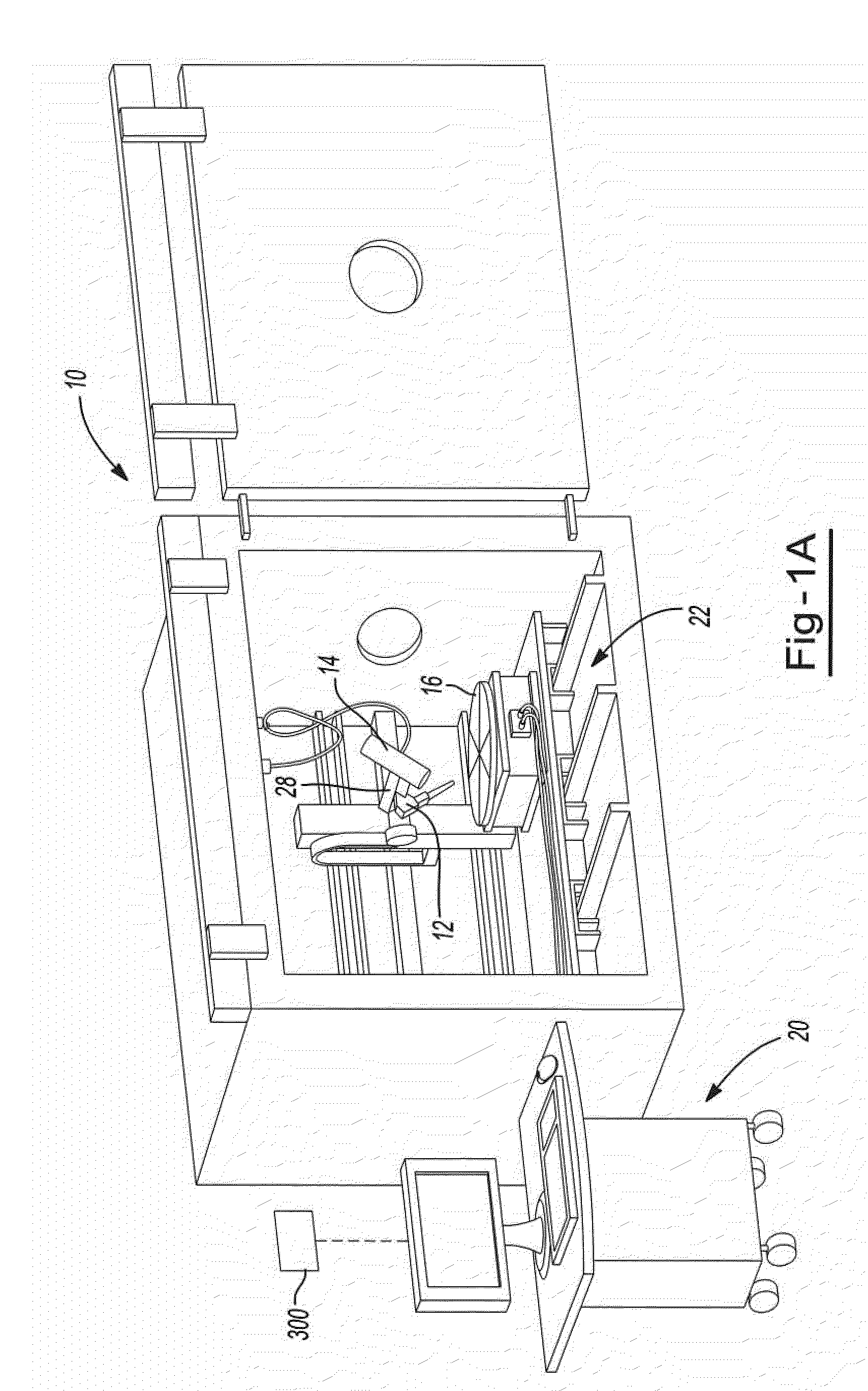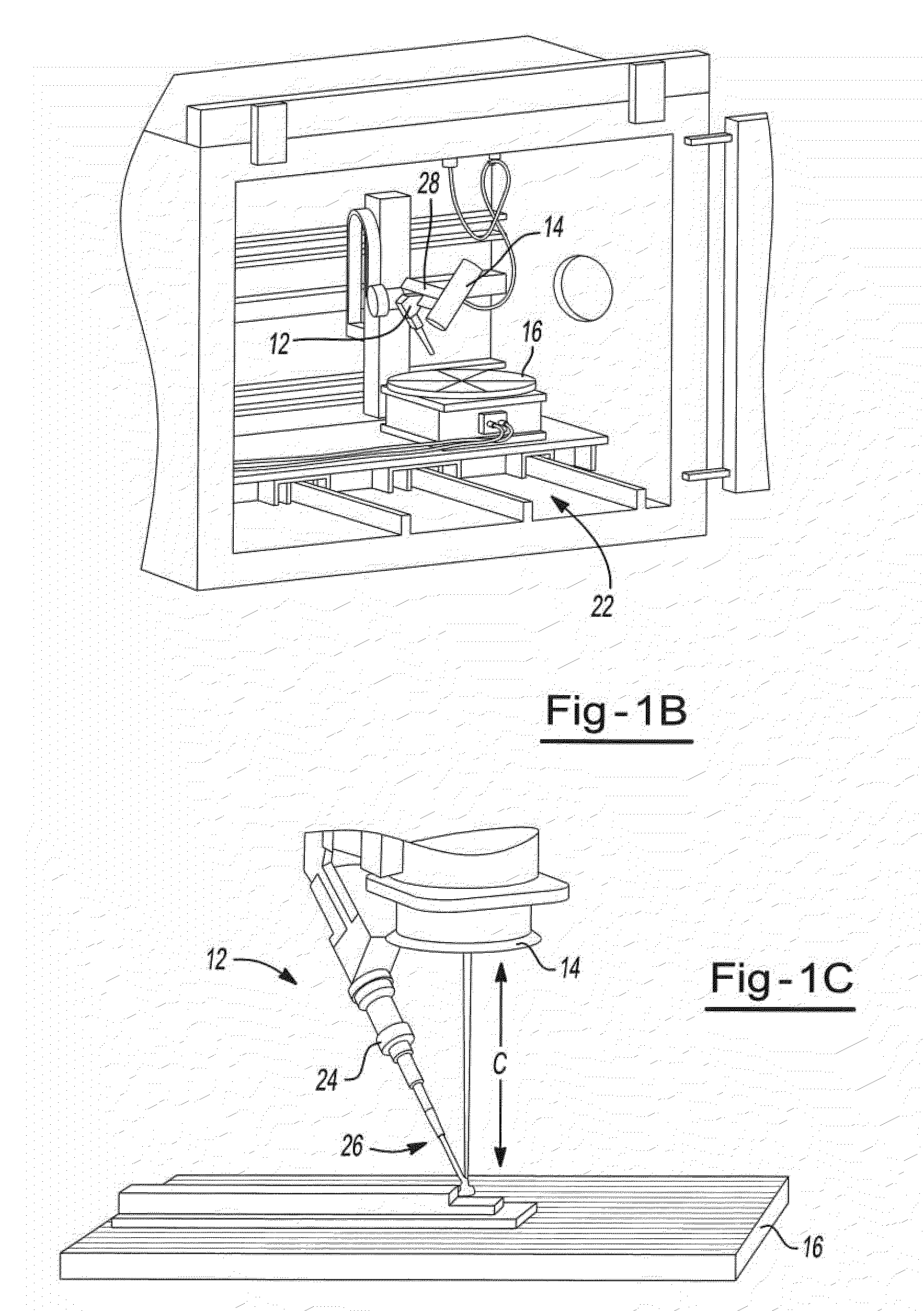Electron beam layer manufacturing using scanning electron monitored closed loop control
a closed loop control and electron beam technology, applied in the direction of electron beam welding apparatus, material analysis using wave/particle radiation, nuclear engineering, etc., can solve the problems of potential complications of the approach, especially acute difficulty
- Summary
- Abstract
- Description
- Claims
- Application Information
AI Technical Summary
Benefits of technology
Problems solved by technology
Method used
Image
Examples
Embodiment Construction
[0022]The present invention provides an apparatus and process for layer manufacturing (LM) of a three-dimensional article. The invention is particularly directed at an apparatus and process for LM that provides high output rates. For example, it is possible that article (e.g., metallic article) build rates of at least about 0.5, 1.0, 1.5, 2.5, 3.5, or even 4.0 cm3 / hr, or higher, may be employed. It is also possible that, article (e.g., metallic article) build rates of at least about 2.5, 3.0, 3.3, 5, or even 6.8 kg / hour (e.g. having an average bead width of about 10 to about 15 mm) may be employed.
[0023]In general, the apparatus may include combinations of at least two or more of a material delivery device, an energy emission device (namely an electron beam generation device) that applies energy to liquefy a material (e.g., a metal) delivered by the material delivery device, a work piece support onto which liquefied material is deposited, a closed loop control device (e.g., one that...
PUM
| Property | Measurement | Unit |
|---|---|---|
| power | aaaaa | aaaaa |
| angle | aaaaa | aaaaa |
| power | aaaaa | aaaaa |
Abstract
Description
Claims
Application Information
 Login to View More
Login to View More - R&D
- Intellectual Property
- Life Sciences
- Materials
- Tech Scout
- Unparalleled Data Quality
- Higher Quality Content
- 60% Fewer Hallucinations
Browse by: Latest US Patents, China's latest patents, Technical Efficacy Thesaurus, Application Domain, Technology Topic, Popular Technical Reports.
© 2025 PatSnap. All rights reserved.Legal|Privacy policy|Modern Slavery Act Transparency Statement|Sitemap|About US| Contact US: help@patsnap.com



